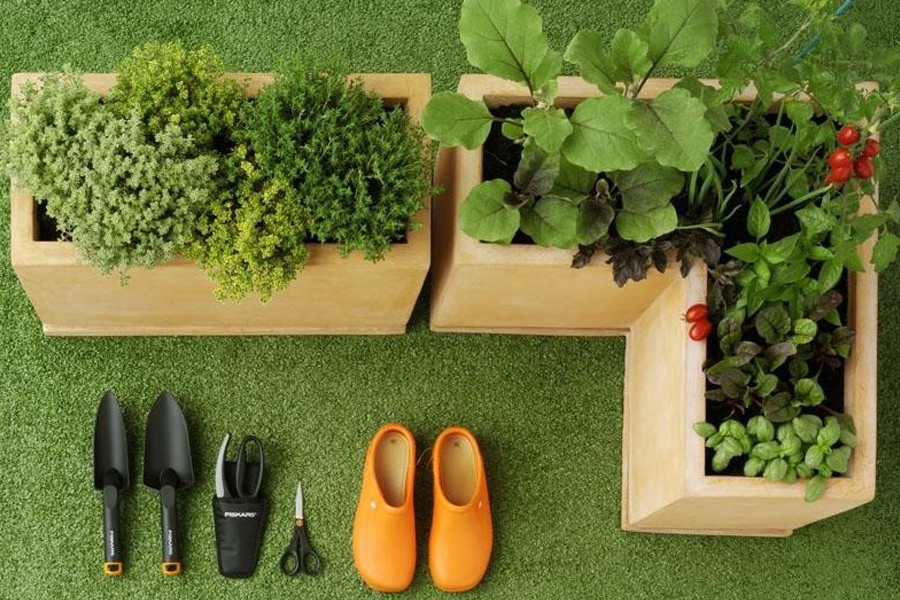
GARDEN AT HOME? HERE ARE THE FRIENDLY PLANTS
We actually talked about synergistic agriculture, do you remember? I can refresh your memory, CLICK HERE.
This is the perfect time to talk about the association of plants. We are all at home, stopped from the usual activities, travel is limited and even shopping is not always easy. Time, needs associated with the perfect season lead us to finally dedicate ourselves to our home garden.
Don't you have a garden? Do you live in the city? No problem, even in a corner of a balcony or by taking advantage of your window sills you can get fresh fruits and vegetables for your table.
The basis for the success of a garden or mini garden is to associate the plants so that they can grow strong and healthy to give excellent fruits. Like? Through associations, a great way to make the most of nature and its potential.
In this article we want to give you all the information you need to make good associations for the synergistic vegetable garden, therefore how to combine vegetables and plants correctly.
How does pairing work?
It is an ancient and widespread practice and is based on the principle that each plant has different physiological characteristics and benefits from being grown alongside completely different genera.
For exemple:
Tall plants shade plants that need air but not direct sun.
The organic substances released by some plants act as nourishment for the fruit shrubs that I create next to them.
The antiparasitic properties of some plants protect others more prone to attack by fungi and parasites.
The association is the technique of combining different plants with each other, usually from different families, which benefit from their proximity.
MEMBERSHIPS FOR YOUR HOME GARDEN
Especially in limited spaces it is good to make the best use of the available land and the associations are a fundamental ally for good plant growth. Let's make examples of the most common plants.
STRAWBERRIES
The buckthorns love beans and vice versa, in fact the exchange of nitrogen that takes place in the soil promotes the growth of strong and healthy fruits. In addition, strawberries are beautifully protected by chives. Lettuce and cabbage are also very welcome neighbors to strawberries.
ZUCCHINI
The "association of the three sisters" is one of the best known and oldest and combines the cultivation of courgettes or pumpkins, corn and beans. Each of these three crops receives great benefits from the neighbors and no one steals nourishment or space from the others:
The beans, which are supported by corn, release nitrogen which nourishes the zucchini which in turn growing horizontally limit the growth of weeds. A magical synergy links these three crops.
AUBERGINES
Beans are essential for the good growth of the aubergine which is nourished by the nitrogen released by it. They are also protected by carnation and calendula which help keep flies and midges away.
CARROTS
Onion and shallot are among the most friendly plants of the carrot, which help keep flies away.
If you love fennel and celery, they also perform the same function for carrots.
TOMATOES
One of the most loved fruits on our tables, the tomato. It can be grown alongside mint and basil and feeds on substances completely different from asparagus which are among the best neighbors for tomatoes which in turn protect them with their shade.
POTATOES
If grown with peas, beans and broad beans they reach their best state.
For flowers also remember that:
If you love ROSES, cultivate GARLIC alongside it, a natural antiseptic that keeps parasites away
The IBISCO-BASIL-ACHILLEA triad is a winner, in fact basil is a natural pesticide that protects the hibiscus, while the yarrow helps the production of basil essential oil, making it very fragrant.
Your hydrangeas love MINT very much, which protects them from parasites.
MIMOSA-PEONIA-THYME form a perfect team, in fact mimosa acts as a natural fertilizer because it fixes nitrogen to the soil, while petunia protects the roots and attracts good insects and the thyme acts as a germicide and bactericide, all this alternating blooms from spring to summer.

 English
English Italiano
Italiano Español
Español Português PT
Português PT Français
Français Deutsch
Deutsch Polski
Polski Nederlands
Nederlands Svenska
Svenska
All comments